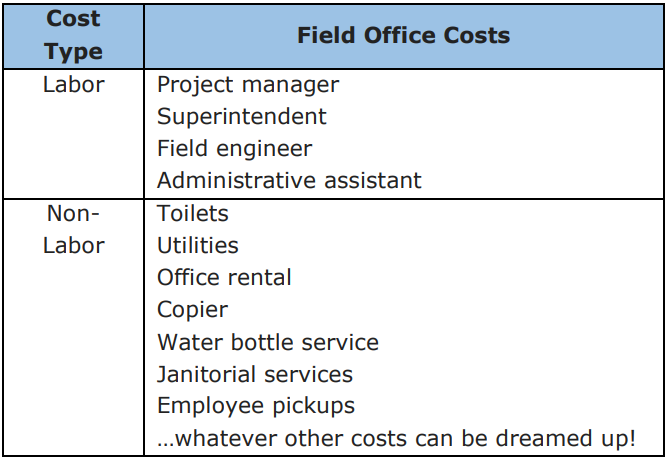Executive Summary. Generally speaking, the cost associated with time loss on a contract are called extended performance costs. Here’s a brief talk on extended performance.
What is extended performance? Let’s break down the term. Extended refers to the duration of the contract having gone longer than was anticipated. For example, say the original contract duration was 365 calendar days. Then, at no fault of the Contractor, the project went another 30 calendar days. This is the extended part of extended performance. The performance part of the term here has to do with extra cost incurred by the Contractor because of this delay being incurred by the Contractor. So, here is how this will come out of a Contractor’s mouth: “you delayed me; time costs money; this claim here is for the cost as a result of the effects of the time delay. Pay me.”
Calculating the first half of the term: extended. This is a matter of proving that the critical path was impacted. If the contract stated the project had to be done within 365 calendar days (and the Contractor legitimately showed in the initial schedule submission that he/she was going to get it done in that time), and now the Contractor has proven that the 30 calendar days of additional time legitimately pushed the schedule, the Owner may be liable.

Calculating the second half of the term: performance. This is all about cost. This is different from a productivity claim where the Contractor says “I should have laid 50 lineal feet a day of pipe (and that’s how I bid it), but I only got 10 lineal feet a day. Pay me because my loss in productivity was due to something out of my control.” These costs are all about how many people and how much equipment was on the project. So, if the job was 100 lineal feet, I should have been here two days, but I was here ten (10) days.
You owe me eight (8) days of my crew (10 days it took less 2 days it should have taken) at $10,000/day – you owe me $80,000. In the case of extended performance, these are just costs associated with time. Normally these claims will be about field office overhead1.
In the case of the field office costs above, all of these job costs would have been theoretically stopped on that 365th day, so the 366th day became an Owner cost. A Contractor claim comes in with a listing of all these costs and then it is usually broken down into a per calendar day cost and then applied to the delay duration.

My story. I’ve made these claims, and defended against these claims, many times before. I usually lean on others in my organization to do the heavy lifting on the schedule analysis, but the costs I have assembled personally and audited personally.
As a former contractor, these costs are legitimate, but most often favor the Contractor. I was suspended on a job for about six months and could not demobilize my equipment because the project was in a “remote” area (it was on Kauai – a neighbor island to Oahu). I also had field staff there that couldn’t be
easily reassigned (this was in the days before remote working). I claimed all that plus more and was successful.
The home office overhead is usually a battle; it usually gets more traction in a formal legal setting. On that Kauai matter above, I think I made the home office claim too, but I think I didn’t get it. Can’t remember, but remember well enough to recall that home office overhead is always a tough one! Work safe!
Work safe!






0 Comments